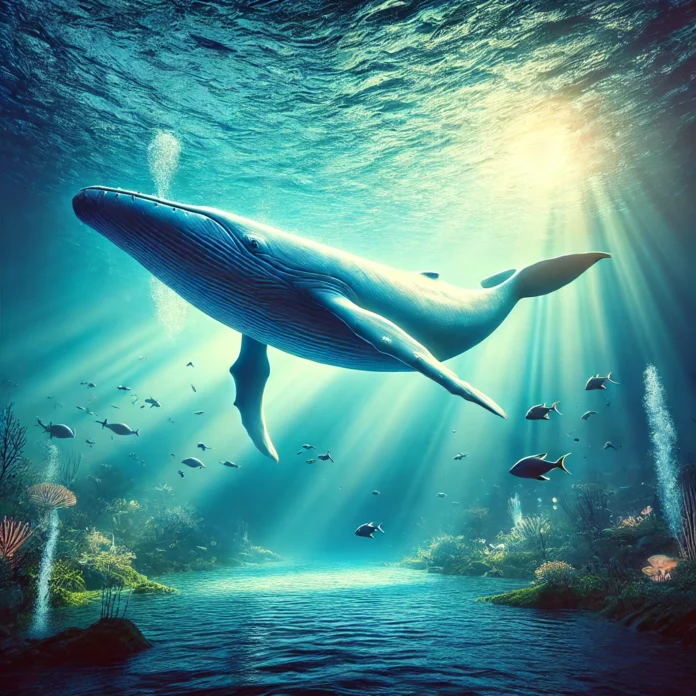When we think of the largest animal in history, our minds often wander to massive creatures, perhaps even mythical ones. But did you know that the largest animal in history still exists today? If you’re wondering, is the largest animal in history dead or alive?, the answer might surprise you. The largest animal known to ever roam the Earth is very much alive today, and it’s not what many people might expect. In this article, we will dive deep into the question of is the largest animal in history dead or alive?, exploring the fascinating details behind this record-breaking creature and its way of life.
What is the Largest Animal in History?
The title of the largest animal in history belongs to the blue whale, scientifically known as Balaenoptera musculus. These marine giants are truly astonishing in size, with some individuals reaching lengths of up to 100 feet and weighing as much as 200 tons. Just to put that into perspective, a blue whale’s tongue alone can weigh as much as an elephant, and its heart can weigh as much as a car!
So, is the largest animal in history dead or alive? The answer is very much alive. The blue whale is the largest animal currently living on our planet, and it is still swimming the oceans today. Despite their immense size, blue whales are not invincible. They face numerous challenges, including threats from climate change, ship strikes, and past whaling activities, which have left their populations in a precarious state.
The Blue Whale: A Modern-Day Titan
When you ask, is the largest animal in history dead or alive?, you might imagine that such a creature would have been long gone by now. However, the blue whale is not just a relic of the past; it is a majestic and living testament to the wonders of nature. These animals are found in oceans across the globe, primarily in colder waters like the Antarctic and Arctic oceans, although they can also be found in warmer waters during migration.
The blue whale’s sheer size allows it to travel great distances, sometimes migrating up to 12,000 miles each year. This remarkable migration ensures that the whale has access to abundant food sources, such as krill, which make up the bulk of its diet. Despite their massive size, blue whales feed primarily on tiny creatures, using their baleen plates to filter large quantities of krill from the water.
How Big Is the Largest Animal in History?
The size of the blue whale is almost beyond comprehension. To answer the question, is the largest animal in history dead or alive?, it’s worth mentioning the astonishing dimensions of these creatures. Adult blue whales can grow up to 100 feet in length, which is roughly the length of three school buses lined up end to end. To make things even more impressive, the average blue whale weighs around 150 to 200 tons, equivalent to the weight of about 30 adult elephants!
In fact, blue whales are so large that when they were first discovered, their massive size seemed almost unbelievable. Scientists and sailors alike were awestruck by the sheer magnitude of these creatures, and their status as the largest animal in history has remained unchallenged for many years.
Why Is the Blue Whale the Largest Animal in History?
The blue whale holds the title of the largest animal in history not just because of its size, but also because of its unique adaptations that allow it to thrive in the open ocean. Unlike land animals, which have limitations based on gravity and the need for solid ground, blue whales are free to grow enormous in size because water supports their massive frames.
The vast oceans offer enough space and food sources for blue whales to reach these extraordinary dimensions. Their bodies are perfectly suited to life in the water, with streamlined shapes that minimize drag and allow for efficient swimming over long distances. Their large hearts and lungs enable them to hold their breath for extended periods, diving to incredible depths in search of food.
Are Blue Whales in Danger?
Though the question is the largest animal in history dead or alive? may seem straightforward, there is more to it than meets the eye. While blue whales are still alive, their survival is not guaranteed. In the past, blue whales were heavily hunted for their blubber, which was prized for its oil. This hunting nearly drove them to extinction in the 20th century.
Today, the population of blue whales is recovering, but they remain vulnerable to threats such as climate change, pollution, and ship strikes. The warming of ocean waters and the changing patterns of krill distribution threaten the blue whale’s food supply, making survival more difficult. Additionally, increasing levels of ocean noise, primarily from shipping and industrial activity, interfere with their communication and navigation systems.
Conservation efforts have been put in place to protect blue whales, and international laws now prohibit commercial whaling. Still, many conservationists argue that more needs to be done to protect these giants of the sea, ensuring that future generations can continue to ask, is the largest animal in history dead or alive?—and the answer remains “alive.”
The Fascinating Life of Blue Whales
One of the most fascinating aspects of the blue whale’s existence is its ability to communicate over vast distances. These whales produce low-frequency sounds that can travel for miles underwater. These vocalizations help them communicate with one another, especially during migrations or when they are in social groups.
Though blue whales are often solitary creatures, they do come together for mating and socializing. Their migration patterns, which take them from polar waters to tropical seas and back, are critical for their survival. During the colder months, blue whales feed heavily on krill, building up reserves to sustain them through the breeding season, when food is less abundant.
Their breeding behavior is also quite interesting. Female blue whales give birth to one of the largest newborns on Earth—calves that are about 23 feet long and weigh roughly 3 tons at birth. These calves are nursed for about 6 to 7 months, growing rapidly on their mother’s rich milk, which can contain up to 40% fat. This rapid growth is crucial for the survival of the calf, as it needs to build up strength to survive in the vast, sometimes perilous, ocean environment.
Can Anything Surpass the Blue Whale’s Size?
With the question of is the largest animal in history dead or alive? still on your mind, it’s important to consider whether anything can surpass the blue whale in size. As of now, no living or extinct animal has come close to matching the blue whale’s size.
While some dinosaurs and prehistoric reptiles like the Argentinosaurus or the Megalodon may have been massive, none of them rival the blue whale in sheer size. Many scientists believe that the ocean’s buoyancy allowed creatures like the blue whale to grow to such massive proportions, whereas land animals are limited by the force of gravity.
Conclusion: The Largest Animal in History
To wrap up, if you’re asking, is the largest animal in history dead or alive?, the answer is clear. The blue whale is very much alive today, continuing to swim through the oceans as the largest animal in history. While they face many challenges, these majestic creatures are a reminder of the incredible diversity of life on our planet.
The blue whale’s size, behavior, and adaptations are nothing short of extraordinary, and their continued survival is a testament to the resilience of nature. So, the next time you ponder the question, is the largest animal in history dead or alive?, you can rest assured that the answer is alive and thriving, despite the challenges it faces.

